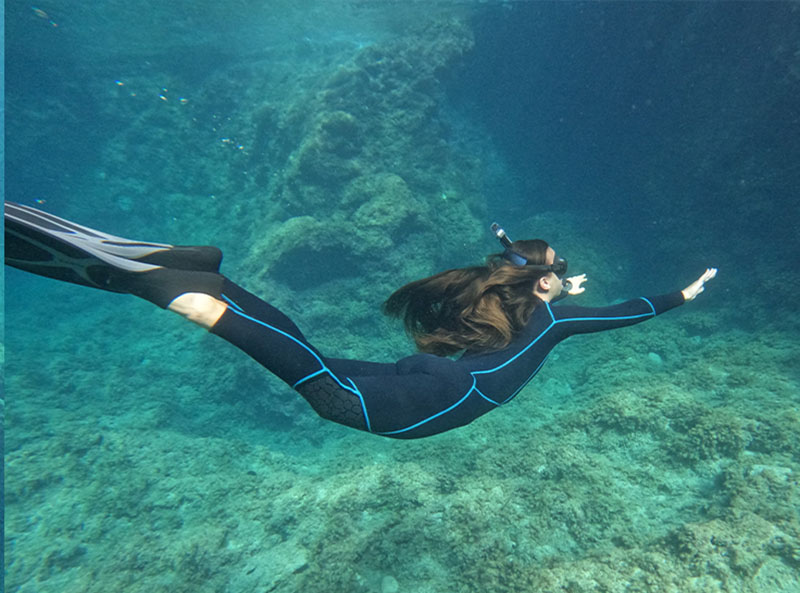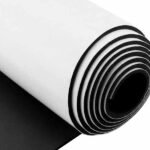Wetsuits are commonly associated with water sports like surfing, triathlons, and open-water swimming. But are wetsuits good for swimming? The answer depends on several factors, including the type of swimming, water temperature, and individual preferences. In this article, we’ll explore how wetsuits work, their benefits, and why they are a good choice for certain swimming activities.
How Do Wetsuits Work?
Wetsuits are designed to provide insulation and buoyancy in water, especially in cold conditions. They are typically made from a material called neoprene, which has insulating properties that help trap a thin layer of water between the suit and the body. The body heat warms this layer, keeping the swimmer warm. Here’s how they function:
- Insulation: Neoprene wetsuits help maintain body heat in cold water by trapping water between the suit and the skin, which is then warmed by body temperature.
- Buoyancy: Wetsuits add buoyancy due to the air bubbles trapped within the neoprene. This buoyancy helps swimmers maintain a better body position in the water.
- Flexibility: Modern wetsuits are made with stretchable neoprene, allowing for a high degree of flexibility, especially around the arms and legs, which is important for swimming efficiency.
Key Functions of Wetsuits
| Function | Description |
|---|---|
| Insulation | Traps a thin layer of water that is warmed by the body to maintain heat. |
| Buoyancy | Increases buoyancy, helping swimmers float and maintain proper posture. |
| Flexibility | Allows movement without restricting the swimmer’s range of motion. |
Is it OK to Wear a Wetsuit in the Pool?
Wetsuits are primarily designed for open-water swimming, but they can be worn in pools, too. However, there are a few things to consider:
- Water Temperature: Pools are usually kept at a warmer temperature, and wearing a wetsuit might cause overheating. However, in colder pools, wetsuits can help maintain body temperature.
- Comfort and Flexibility: Pools typically have chlorine, which can affect the material of a wetsuit over time. It may cause the neoprene to degrade more quickly, especially with frequent use.
- Rules and Regulations: Some competitive pools or training facilities may have restrictions on wetsuit use, so it’s important to check the specific pool’s policies.
In general, while wearing a wetsuit in the pool is not ideal for regular swimming, it can be helpful for special training sessions or cold-water exposure.
Are Wetsuits Necessary for Swimming?
Wetsuits are not always necessary for swimming, but they become highly beneficial in certain conditions:
- Cold Water: If you are swimming in water temperatures below 70°F (21°C), a wetsuit is recommended for warmth.
- Open Water Swimming: For open-water swims, a wetsuit provides added protection from the elements, including cold water, UV rays, and jellyfish.
- Safety and Buoyancy: Wetsuits also help swimmers maintain buoyancy, making it easier to float or swim for extended periods, especially in colder, rougher waters.
In warm water, wetsuits are not necessary for swimming. However, for long-distance swims or in unpredictable conditions, they can make swimming more comfortable and safer.
Do Wetsuits Improve Swimming Performance?
Yes, wetsuits can enhance swimming performance in certain situations:
- Buoyancy: The buoyancy provided by a wetsuit helps swimmers stay in a streamlined position, reducing drag and improving speed.
- Thermal Protection: In cold water, wearing a wetsuit allows swimmers to focus on their performance without being distracted by the cold. It helps prevent fatigue from cold-related muscle stiffness.
- Increased Confidence: By providing extra buoyancy and warmth, wetsuits can boost a swimmer’s confidence, especially in open water or competitive settings.
For experienced swimmers, wetsuits are particularly useful for training in challenging conditions and improving overall performance.
What Are the Benefits of Using a Wetsuit for Swimming?
Using a wetsuit for swimming offers several advantages, especially when it comes to temperature control and performance:
- Thermal Protection: The primary benefit of a wetsuit is keeping the swimmer warm in cold water, which helps prolong swim times and prevents hypothermia.
- Buoyancy and Positioning: The added buoyancy makes it easier for swimmers to maintain a streamlined position, reducing drag and conserving energy.
- Protection from the Elements: Wetsuits can also protect against harsh environmental factors like UV rays, jellyfish stings, and abrasions from rocks or coral.
- Increased Comfort: Wetsuits allow swimmers to maintain comfort over long distances or in rough water conditions.
Benefits of Wetsuits for Swimming
| Benefit | Description |
|---|---|
| Thermal Protection | Keeps swimmers warm in cold water, reducing risk of hypothermia. |
| Buoyancy | Helps swimmers float and maintain a streamlined position in the water. |
| Protection | Offers protection from UV rays, jellyfish stings, and abrasions. |
| Comfort | Increases comfort during long swims in difficult conditions. |
What Are the Different Types of Wetsuits for Swimming?
Wetsuits come in a variety of types designed for different swimming needs. The most common types include:
- Full Wetsuits: These are the most common and provide full coverage from the neck to the ankles. Ideal for colder water temperatures.
- Shorty Wetsuits: These cover the torso and upper arms/legs, leaving the limbs exposed. Shorty wetsuits are great for warmer water but still provide insulation.
- Sleeveless Wetsuits: Designed for warmer conditions, these wetsuits offer freedom of movement with no sleeves but still provide thermal protection.
- Rash Guards: A lighter option, rash guards protect from sun exposure and minor abrasions but do not offer thermal protection.
Types of Wetsuits for Swimming
| Wetsuit Type | Ideal Water Temperature | Description |
|---|---|---|
| Full Wetsuit | Cold (50°F – 60°F / 10°C – 15°C) | Provides full body coverage, ideal for cold water and open-water swims. |
| Shorty Wetsuit | Mild (60°F – 70°F / 15°C – 21°C) | Covers the torso and limbs, suitable for warmer waters. |
| Sleeveless Wetsuit | Warm (70°F – 80°F / 21°C – 27°C) | Offers freedom of movement with thermal protection for warmer conditions. |
| Rash Guards | Warm (80°F / 27°C and above) | Lightweight and breathable, protects from sun exposure and abrasions. |
Which Swimming Activities Benefit from Wearing a Wetsuit?
Wetsuits are especially beneficial for certain swimming activities:
- Open-Water Swimming: In outdoor environments, wetsuits provide warmth, buoyancy, and protection from environmental elements like wind, sun, and sea creatures.
- Triathlons: Triathletes often wear wetsuits to gain buoyancy and warmth in cold-water swim portions of the race.
- Survival Swimming: Wetsuits can help swimmers conserve energy and stay warm in emergency situations or during long-distance swims.
- Surfing: Although not traditional swimming, wetsuits are essential for surfers to maintain warmth and protect from abrasions.
How to Choose the Right Wetsuit for Swimming?
Choosing the right wetsuit depends on several factors:
- Water Temperature: The thickness of the wetsuit (measured in millimeters) will depend on the water temperature. Thicker suits are needed for colder waters.
- Fit: Proper fit is critical for comfort and performance. A wetsuit should be snug but not restrictive, allowing freedom of movement while preventing water from entering.
- Flexibility: Look for wetsuits with flexible panels around the shoulders and legs to allow for natural movement.
- Material Quality: High-quality neoprene ensures a balance of warmth, buoyancy, and flexibility.
In general, the ideal wetsuit for swimming should balance warmth, comfort, and performance.
Conclusion
Wetsuits are highly beneficial for swimming in cold water and open-water environments, providing insulation, buoyancy, and protection from the elements. While they may not be necessary for warm-water swimming, they significantly improve performance, comfort, and safety in challenging conditions. Whether you’re preparing for a triathlon, swimming in cold waters, or enjoying open-water adventures, a wetsuit is a valuable tool to enhance your swimming experience.
Choosing the right wetsuit involves considering factors like water temperature, fit, flexibility, and material quality. For swimmers looking to get the most out of their wetsuit, understanding how it works and which type suits your specific needs is key. By selecting a wetsuit that matches your swimming goals, you can improve your comfort, performance, and safety in the water.
For those interested in custom wetsuit solutions, working with a manufacturer who understands your needs can provide tailored options for a perfect fit. If you’re looking for high-quality neoprene wetsuits, don’t hesitate to reach out to us for a quote or consultation.











